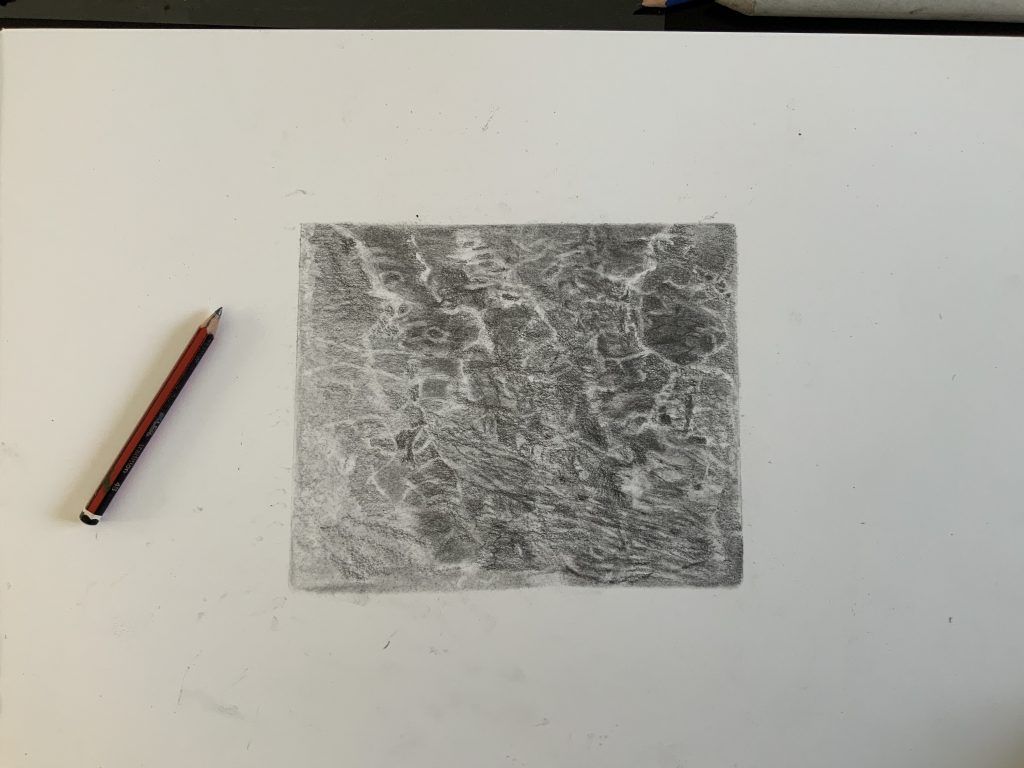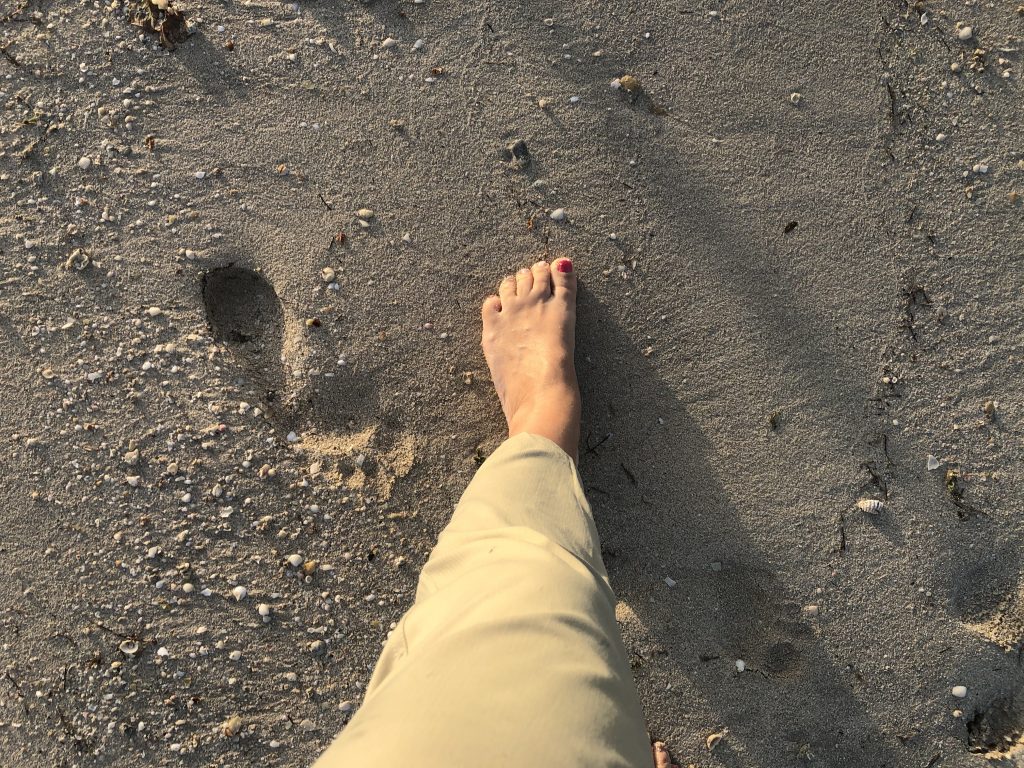With transformation in mind, in its broadest sense, write a short statement (1000 words) about your own work in your learning log, in terms of the things that are important to you to be able to convey. What are your motivations in the work, what drives you, how do you want the work to affect people? Send this to your tutor with links to the work for this part of the course in your learning log.
I think if I want to take transformation in its broadest sense, I could say that art has always been about transformation – transforming a cave into a place where a world of animals could be seen to connecting with communities around social, economical political challenges they experience in terms of power structures within education, healthcare, housing, safety, war, violence, police brutality, freedom of speech and expression in oppressed situations…when we challenge or critique access to these resources. I do think it important not to lose sight of effective visual language and talking to the right audience when an artist do address social issues and want to impact change or discussion to consider or other ideas and views. I do think during this course I was exposed to many artists who could ‘marry’ these attempts. I recently read the following words :
“Art is a compulsion. I think most artists have that knack or that compulsion to draw, and I think that’s the key element,” said Heap of Birds. “To succeed at it, it’s something you have to do to keep your balance.”
A short while ago I was listening to 3 OCA students sharing their course journey with a group on Zoom. What I took from them is the opportunity learning brings in terms of personal transformation, the importance of following through, being open to new ideas, experimenting and learning from the process of making, mistakes and all. One of the students, talked about giving herself permission to experiment with medium and getting the affirmation in the process that the work she was making is relevant. During the course I became strongly influenced by the ideas of Trinh T Minha-ha and her way she describes her work as a space of in betweenness:
Art could be the force that enables change and keeps history alive, while the poetics of the creative everyday could be both a dimension of political consciousness and a transformative mode of history.
I have discovered with my studies and work on my practice, that I have become so consumed with what I am making that my husband sometimes get annoyed with how much I can talk about it! Looking back over the course I have come to an understanding to be comfortable to question and search for understanding through my practice, which includes painting, drawing, making short videos and using found objects. I would like to think that my work is starting to open discussion about the experience of looking at my surroundings through walking, and in the groups I recently joined I see opportunity to collaborate and communicate about practice and the everyday attempts and support of working on it. I believe this is a way to connect and get to the bottom of issues and involvement.
I am motivated by the learning and expression of art as a way to connect and affect. My coming back to the studio after a walk I feel I connect as a way to ground me for the day and keeps open a conversation I can have with myself about how things influence me. Sometimes I need reading time to help me understand or learn about my experiences or observations. I have looked at the plants that grow this this specific ecosystem I walk, how they have adapted to low rainfall, harsh heat as well as high amount of saline in ground water and surroundings. Their adaptation over many years have been to have smaller and less leaves to absorb as much moisture as possible, even have salt glands!
I believe there is something I would call a ‘moral aesthetics’ at work in the bigger world ‘consciousness’ – currently artists are involved in activism which also touch and explore outside the boundaries of our humane lived experiences, we look into space, marine life, global warming, environmental practices, global warming hazards as well as the humane tragedies and injustices in response to political and socio economic forces. I see a greater understanding of people wanting to ‘live off the grid’ use more sustainable consumerism and daily life practices. I believe that as artist and the artworld there is a huge role to play within celebrating and focussing on connectivity between us and our surroundings, and not so much on the differences. I believe I am motivated to move away from binary thinking and decision making, which forces one to take sides – I search for collaboration as a way to find solutions for our problems. I also look forward to move back to South Africa and become part of a community and benefit from a shared experience with other artists as well as friends and family, and place. I feel I am sensitized to the hurt of Apartheid and its roots that are still prevalent in the town where we will life. I cannot see my own involvement not touching on these issues. I stay a social worker at heart, but have found in my art a place to express and hopefully impact others. I would consider joining a local drawing group, but do some voluntary time at a local ngo, but being more aware of the pitfalls of ‘doing the talking’ or trying to ‘own’ a project. I envision working with women, most probably my age group with whom I could also have conversations about trauma, hurt and shame of being the other in a community.
My practice has a lot to do with place and how we inhabit that space – I feel I connect by finding ways to look at place, be touched and inspired by it, and my walking practice enhances that. My want to give expression of how I live my life: about my sad and happy, my fears and dreams. I see walking as a ritual to be present, but also a place to have my mind wander and imagine place -different or even better. Walking has opened many ideas such as :
looking at place as something temporary, in proximity to, familiar, explorative, stimulating, seeing more, hearing more, sensing more, awareness, repetitive, transient, curiosity, longing for, connecting to, meeting afresh, being inspired or in awe, documenting, reflecting, re engage with, experience a sacred space/moments , contemplation, happiness, searching, finding, loss, history…..life and change
For me it is a form of ‘awe’ I look for in the small or detailed organic forms of plants, grass, bark, leaves, clouds, rocks and stones I found or observe. I recently heard, in a group of walkers, somebody use the work ‘re-enchantment‘, and it does resonates when not just beauty seems to find its way into that which connects with my mind and eyes. At the same time the reality of how life is actually lived and experience always appear in looking deeper – one realize pain and suffering of others. I have given a new meaning to doing work which talks to my identity – self (my self) and think I should look at others as other (selves).
During this course I become much more aware of the importance to have an ongoing investigative and experimental working practice – painting and drawing does matter more now that I investigate these materials and also look into the basic principles of drawing/painting. I have also drawn my personal activities into that of my art practice – It is about what is around me, how I experience it as well as how I want to make a difference with my ideas about living and sharing life with others, human on non-humane. I will explore working with more ‘temporal’ materials – not necessary painting on canvas, but painting or mark making on re purposed or found materials, or combining it with drawings on Velum, plastic type surfaces or even fabrics. I feel strong to develop my printing skills – I have always had a strong connection with imprints.
I believe that observing and looking at my environment is what my work and the narrative will develop into. It is a process which is strongly connected to place. I think the essence is that walking help me to hold my attention to what I experience, at a certain moment and in a way that I can go back and reflect, question ideas and feel connected. I can continue to read, research finds or ideas that flow from the walking experience. How to get there is part of looking at my parallel project as a path to sustain this practice.
The drawing below is of reflections on the water at the beach I have been walking regularly. I have worked with pencil and eraser and the lines which formed looked like different landscapes – I felt lost when focusing into one area of the drawing process, but then the whole is so big – overwhelming with visual information likes lines and marks. I liked the process of getting lost and seeing where it takes me. I would like to explore more of these works and would consider working with soft pastels as well. I look at this as a work in progress – I have continued to draw on it during the last week and will continue to do so. I think going into the work is a process of looking deeper every time – I almost have to walk away to come back and look afresh.


